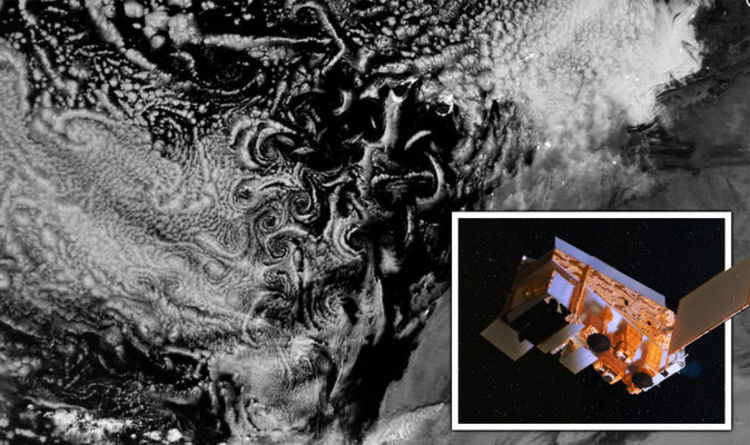NASA and the National Oceanic and Atmospheric Administration’s Suomi NPP satellite captured the incredible view over the Moroccan coast late last month. The spiralling cloud patterns are called von Kármán vortices, named after the physicist who first described the process that creates them. The small islands below the clouds agitate the wind flow, generating the eddying patterns.
Although these rippling vortices have been sighted before, they have only been viewed during the daytime.
I don’t recall having seen an image of von Kármán vortices at nighttime previously, so I would consider it rare
Professor Paul Beggs
Cutting-edge technology capable of sensing and processing light in the shortwave infrared part of the electromagnetic spectrum has made it easier for satellites to spot these von Kármán vortices.
These features are just like the spiralling eddies that form in a stream immediately downstream of an obstacle like a rock.
Professor Paul Beggs, of Macquarie University told NASA: “This is a spectacular satellite image.
“I don’t recall having seen an image of von Kármán vortices at nighttime previously, so I would consider it rare.”
Launched in 2011, the Suomi NPP is a weather satellite operated by the United States National Oceanic and Atmospheric Administration.
Suomi was originally intended as a pathfinder for the US Air Force’s defence program.
The satellite’s instruments provide climate measurements that continue prior observations by NASA’s Earth Observing System.
The satellite is named after Verner E. Suomi, a meteorologist at the University of Wisconsin–Madison.
The NASA Earth Observatory frequently shares unusual images of Earth from above.
NASA’s Aqua satellite last year captured a swirling vortex that formed just off the coast of San Clemente Island to the west of San Diego.
And an apparently glowing green plankton bloom was visible in the Gulf of Finland.
The microscopic creatures were swirled into a vortex by an ocean eddy.
Source: Read Full Article




